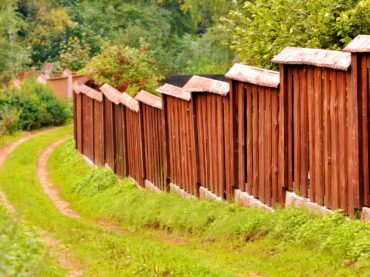 New homeowners often discover that wood decks and fences require more maintenance than expected. Without a clear guide, it’s easy to make mistakes.
New homeowners often discover that wood decks and fences require more maintenance than expected. Without a clear guide, it’s easy to make mistakes.
Caleb Roth, the founder and CEO of Restorative Industries — the parent company of a vertically integrated ecosystem of wood care brands that includes Stain & Seal Supply, Stain & Seal Experts, EXPERT Professional Wood Care and more — answers common questions about everything you need to know to clean, restore and protect your fence and deck like a seasoned professional.
Can I clean a fence or deck myself?
Naturally, we receive a lot of restoration questions about how to clean a wood fence or deck from those seeking to beautify and protect these important exterior features. Some contractors may lead you to believe that cleaning and prepping your wooden structure is quite complicated, and they may even overwhelm you with loads of fancy chemical names and industry lingo. More often than not, this is merely a sales technique. While there are certainly several things a homeowner should know about DIY deck cleaning, the process is relatively simple.
Can you provide some cleaning tips for deck and fence restoration?
For those wondering if cleaning is “really” necessary, the truth is that if you have a brand-new fence or deck, it probably needs little more than a quick sweeping to remove leaves and debris from the surface. On some high-end projects, it is not uncommon for a professional to do a light deck cleaning to remove footprints, dirt and lumber stamps that often appear on brand new wood — but nothing more.
At the other end of the spectrum, older fences or decks may need more obvious cleaning as soon as six to eight months after installation. Lumber begins to deteriorate as soon as it’s cut, so the sooner a high-quality, oil-based stain and sealer can be applied to preserve the wood, the better. If your fence turns gray or begins to show black mold, the time to act is right away.
When considering how to clean a wood fence or deck, any maintenance is better than none at all. There is ongoing debate about how to clean wood surfaces like these and what products to use. If you ask 10 contractors, you will likely get 10 different answers. First and foremost, any mold, mildew and grime must be removed, but you may not know how to go about eradicating it. In reality, just about any of the methods detailed below will work well and give better results for wood staining and sealing on a fence or deck over doing nothing.
What is the best way to clean a wood surface?
Option one is to simply wet the fence down, scrub it with a brush and rinse well to remove loose particles. This largely removes grime, but does not kill the mold and mildew that will eventually destroy your investment.
Is bleach safe for fence cleaning?
Option two is most common, which entails mixing up a chlorine bleach solution at a 1:1 ratio to clean your fence or deck. This will not only kill the mold and mildew, but also remove oxidization and brighten the wood. Simply put and without question, bleach works for these purposes. Some contractors will scoff at — or outright reject — this method, probably because they simply cannot charge top-dollar for this service.
In some cases, after the wood is cleaned with bleach, it might turn an unnaturally light color. However, if you’re staining a fence or deck with a coffee brown, walnut or deep cedar-toned stain, you’re likely to achieve the desired color. As a point of reference, it is common for a dark-haired woman to do bleach treatment before coloring to the desired final tone.
The main goal is to achieve a clean slate and consistent coloring so that everything is uniform once the stain is applied. Is bleaching exterior wood features for everyone? No, but it is certainly an effective way to clean a fence or deck before staining.
What are some premium wood cleaning options?
A final option is what one might refer to as a high-end cleaning service. This is a three-step process, and we do recommend this method if your budget will allow. It starts with a sodium percarbonate cleaning solution applied to the surface of the wood. That will need a little time to work its magic, but it will penetrate deep into the wood. In doing so, it will kill the mold and mildew and loosen dirt and debris on the wood’s surface.
Once that’s done, it’s time to pressure wash. In many regions, the most common lumber types are treated pine and red western cedar. With these and other lumber types, while pressure washing wood is effective, it’s imperative that you do not go overboard with it. Be sure to use a relatively low pressure to simply wash away the dirt and grime.
Some pressure washing companies will clean your fence or deck with extremely high pressure and, while it may look good at first, it can actually destroy the integrity of the wood and cause felting (resulting in a permanently fuzzy look).
Once the wood pressure washing is complete, you will want to adjust the pH level of the material with a brightener, which will give the wood a beautiful, brand-new look. This will also create a great canvas on which to apply a high-quality, oil-based stain and sealer.
While different cleaning recommendations abound, the best option is to choose what you understand and are comfortable with.
As a final step to fully restore a wood fence or deck, it is of the utmost importance to stain and seal the material. This entails a deep-penetrating, oil-based stain and sealer in one. Check with your local stain and seal professionals to determine which oil-based stain is best for your local environment.
To recap, homeowners should first identify if wood fence or deck cleaning is necessary and, if so, to what extent. Next, decide which cleaning method will work best for your particular wood restoration project. The last step, and one that is critical, is to apply a high-quality, deep-penetrating, oil-based stain and sealer in one.




























